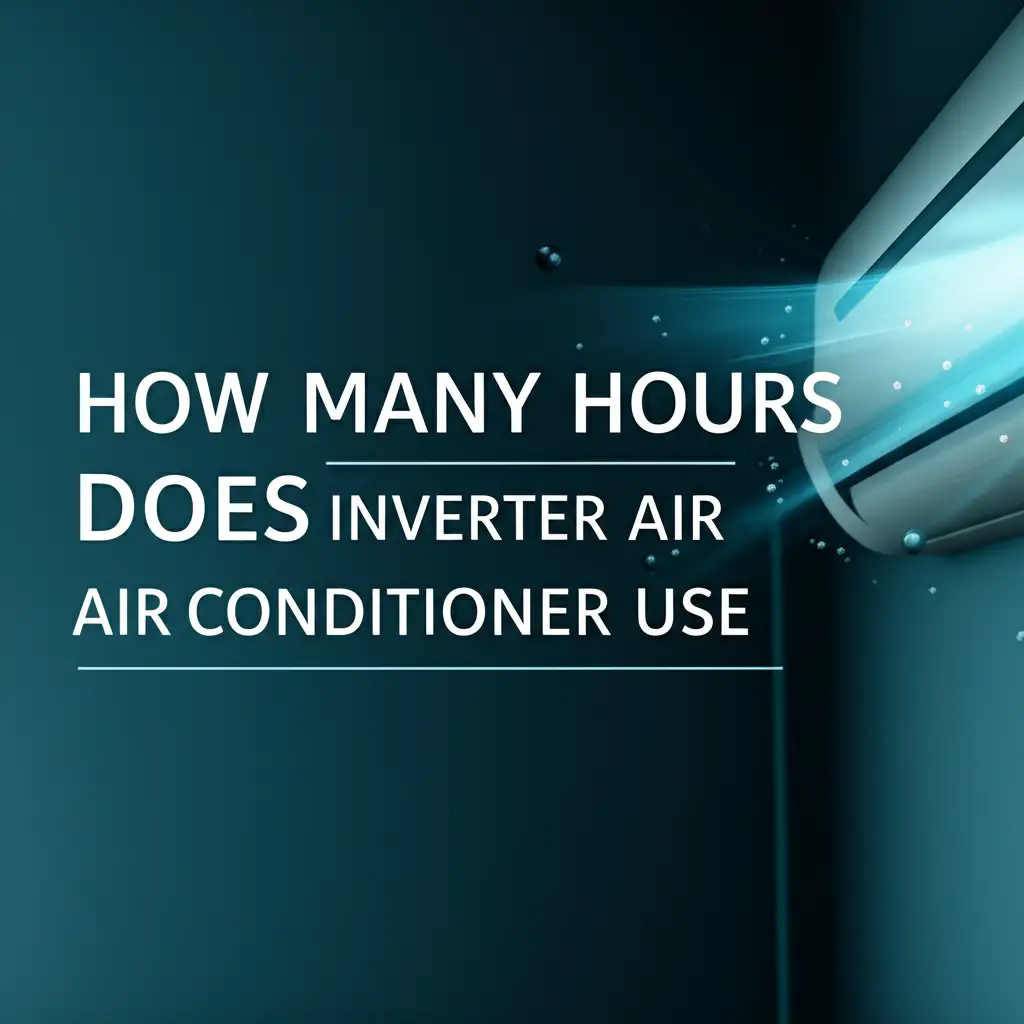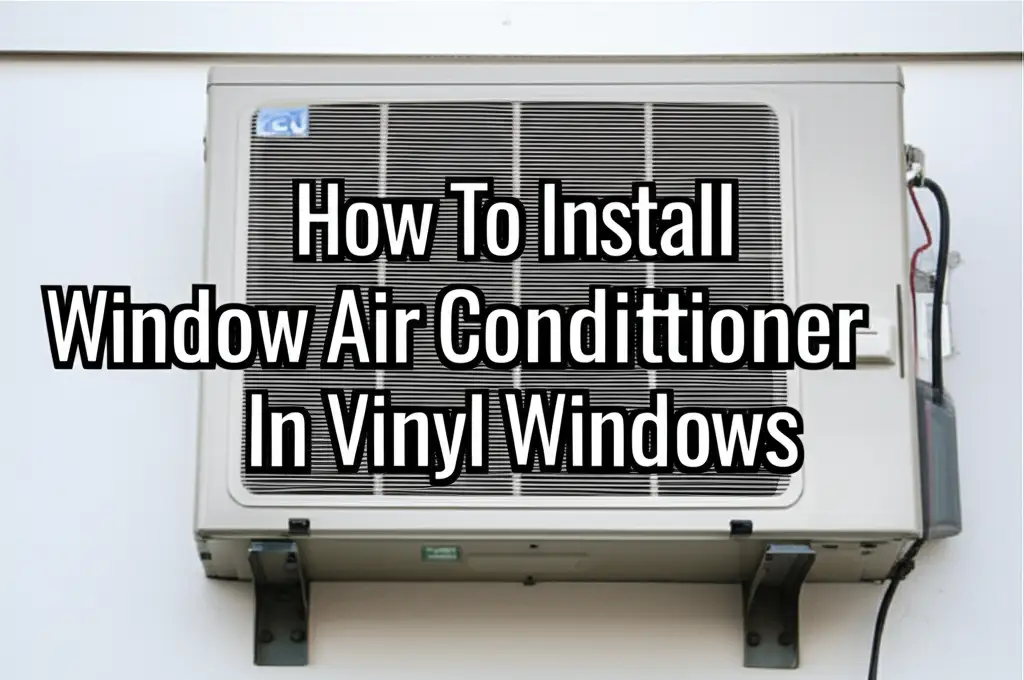· Katria Melrose · Home Improvement · 19 min read
What Is Air Source Heat Pump Heating

What Is Air Source Heat Pump Heating?
Imagine a heating system that pulls warmth from the air outside, even on a cold winter day. Sounds a bit like magic, doesn’t it? For many homeowners, traditional boilers fueled by gas or oil have been the only option for heating.
However, as we look for more sustainable and efficient ways to power our homes, a new player has emerged: air source heat pump heating. This technology is gaining significant attention, and for good reason. It offers a cleaner, potentially cheaper way to keep your home warm and supply hot water.
This article will help you understand what air source heat pump heating is. We will explore how these systems capture heat, the benefits they offer, and what you need to consider before getting one.
We will also discuss installation, typical costs, and essential maintenance. By the end, you will have a clear picture of whether an air source heat pump is the right choice for your home’s heating needs.
Takeaway
- Air source heat pumps efficiently move heat from outside air into your home.
- They reduce carbon emissions and can lower energy bills over time.
- Careful planning, including insulation checks, is key for effective installation.
- Regular maintenance ensures your system performs well and lasts longer.
Air source heat pump heating uses electricity to move heat from the outside air into your home. It works much like a refrigerator in reverse. The system extracts warmth from the air, even at low temperatures, then concentrates it and transfers it indoors. This process efficiently provides heating for your living spaces and hot water for your daily needs.
How Does Air Source Heat Pump Heating Work?
An air source heat pump heating system operates on a principle similar to your kitchen refrigerator or air conditioner. Instead of pushing heat out of your house, it pulls heat from the outside air into your home. This process works even when outdoor temperatures are quite low, sometimes as cold as -15°C or lower. It feels counter-intuitive, but there is always some heat energy available in the air.
The system uses a special fluid called a refrigerant. This fluid cycles through a closed loop system. The loop starts in the outdoor unit. Here, the refrigerant absorbs latent heat from the outside air. Even cold air contains enough heat for the refrigerant to absorb it, causing the refrigerant to turn into a gas.
Once the refrigerant becomes a gas, it moves to a compressor. The compressor increases the pressure of the gas. This increase in pressure also significantly raises the temperature of the gas. This hot, high-pressure gas then moves indoors to the indoor unit, often an exchanger coil. Inside, the hot gas passes through a heat exchanger. It transfers its heat to the water in your heating system, which then circulates through your radiators or underfloor heating. As the refrigerant loses its heat, it cools down and turns back into a liquid. Finally, the liquid refrigerant passes through an expansion valve. This valve reduces its pressure and temperature, preparing it to absorb more heat from the outside air again. The cycle then repeats continuously. This clever process makes air source heat pump heating incredibly efficient. It moves heat rather than creating it, leading to lower energy consumption. You can learn more about how air source heat pumps work with different systems by checking out our guide on How Does An Air Source Heat Pump Work With Underfloor Heating.
Advantages of Air Source Heat Pump Heating Systems
Choosing an air source heat pump heating system offers many significant benefits for homeowners. These advantages span from environmental impact to long-term financial savings and overall home comfort. Understanding these benefits helps explain why more people are considering this technology.
One of the primary advantages is energy efficiency. Air source heat pumps are highly efficient because they do not generate heat. Instead, they transfer existing heat from one place to another. For every unit of electricity they use, they can generate three or four units of heat. This ratio is known as the Coefficient of Performance (COP). A high COP means less electricity is consumed for the heat produced. This efficiency directly translates into lower energy bills compared to traditional heating systems, especially over the long term.
Another key benefit is their positive environmental impact. Air source heat pump heating systems significantly reduce carbon emissions. They use a renewable energy source: the heat naturally present in the air. This helps decrease your home’s carbon footprint. As the grid becomes greener, powered more by renewable electricity, the environmental benefits of heat pumps will only grow. This makes them a vital part of moving towards a sustainable future.
Air source heat pumps also offer dual functionality. They provide efficient heating in winter and can also offer cooling in summer. This means you get a versatile climate control system in one unit. This eliminates the need for separate heating and cooling appliances. Furthermore, these systems are known for their durability and long lifespan. With proper installation and maintenance, an air source heat pump can last 15 to 20 years or even longer. This longevity provides a good return on your initial investment. For more details on system lifespan, you can refer to our article on How Long Does An Air Source Heat Pump Last. Finally, many governments offer financial incentives, grants, and subsidies to encourage the adoption of heat pump technology. These programs help offset the upfront cost, making air source heat pump heating more accessible to a wider range of homeowners.
Is Air Source Heat Pump Heating Right For Your Home?
Deciding if an air source heat pump heating system is suitable for your home requires careful consideration of several factors. Not every property is immediately ready for this type of heating, but many can be adapted. Taking the time to assess your home’s characteristics will help ensure the system performs optimally.
One crucial factor is your home’s insulation levels. Air source heat pumps work best in well-insulated homes. This includes good wall insulation, loft insulation, and double-glazed windows. A well-insulated home retains heat effectively. This means the heat pump does not have to work as hard to maintain comfortable temperatures. If your home has poor insulation, the heat pump might struggle to heat it efficiently. You might need to upgrade your insulation before installing a heat pump.
The type and size of your existing heat emitters also play a role. Air source heat pumps typically produce heat at a lower flow temperature than traditional boilers. This means they are most effective when paired with larger radiators or underfloor heating systems. These larger surfaces can emit more heat at lower temperatures. If you have small, older radiators, they might not be sufficient. You may need to upgrade some or all of your radiators to larger ones designed for lower temperature operation.
Hot water demand is another consideration. Air source heat pumps can provide your domestic hot water. However, they usually require a well-insulated hot water cylinder. This ensures you have enough hot water stored at a usable temperature. Your installer will assess your household’s hot water usage to recommend the correct cylinder size. Space requirements also need thought. The outdoor unit of an air source heat pump needs a clear, unobstructed area outside your home. The indoor unit, which includes a hot water cylinder, also requires sufficient space, often in an airing cupboard or utility room. A professional survey will evaluate these space requirements. Ultimately, an experienced heat pump installer will conduct a detailed survey of your home. They will assess its heat loss, current heating system, and hot water needs. They can then design a system tailored to your specific property. This survey helps determine if an air source heat pump is the right fit and what, if any, upgrades are necessary. For a more detailed look into this decision, refer to our guide Is An Air Source Heat Pump Right For Me.
Understanding Air Source Heat Pump Installation and Cost
Installing an air source heat pump heating system involves several key steps. The overall cost varies significantly based on numerous factors. Getting a clear understanding of both the process and potential expenses helps you plan effectively. The installation process typically begins with a comprehensive home survey. A qualified installer assesses your home’s heat loss, existing heating system, and hot water requirements. This survey helps them design a system that matches your property’s specific needs.
Once the design is complete, the physical installation starts. This involves positioning the outdoor unit, typically on a level concrete base outside your home. It needs to be in a location with good airflow and minimal noise disruption to neighbors. Then, the indoor unit, which includes the hot water cylinder and often a buffer tank, is installed inside your home. This might be in a utility room, garage, or airing cupboard. Refrigerant pipes and electrical cables connect the outdoor and indoor units. The system also integrates with your existing heating distribution system, such as radiators or underfloor heating, and your domestic hot water system. The installer will also ensure proper drainage for condensate from the outdoor unit. Finally, the system is commissioned, tested, and handed over to you with instructions on its operation. You can learn more about the installation process in our article How To Install An Air Source Heat Pump.
The cost of an air source heat pump heating system varies widely. Several factors influence the final price. The size of the heat pump required is a major determinant. Larger homes or homes with higher heat loss will need a more powerful, and thus more expensive, unit. The complexity of the installation also impacts cost. This includes factors like the distance between the indoor and outdoor units, the need for new pipework, or upgrades to your existing radiators or hot water cylinder. The type of heat pump (monobloc or split) can also affect the price. A monobloc unit has all components in one outdoor unit, simplifying indoor plumbing. A split unit has an outdoor and indoor unit connected by refrigerant lines.
Installation costs also cover labor, materials, electrical work, and any necessary groundworks. You should always get detailed quotes from multiple qualified installers. It is important to ask for a breakdown of costs. This includes the heat pump unit itself, the hot water cylinder, installation labor, and any associated electrical or plumbing work. Always factor in potential grants or subsidies, which can significantly reduce the upfront cost. Government schemes aim to make air source heat pumps more affordable. These financial incentives can make the investment more manageable. For more detailed information on specific costs, you can consult articles like How Much Is Air Source Heat Pump Cost and How Much For Air Source Heat Pump Installation.
Maintaining Your Air Source Heat Pump Heating System
Proper maintenance is vital for ensuring your air source heat pump heating system runs efficiently and reliably for many years. Just like any other major appliance, regular care helps prevent problems and extends its lifespan. Neglecting maintenance can lead to reduced performance, higher energy bills, and costly repairs down the line.
The first step in maintaining your heat pump is to schedule professional servicing. It is generally recommended to have your air source heat pump serviced by a qualified technician annually or bi-annually. During a professional service, the technician will:
- Check Refrigerant Levels: They ensure the refrigerant is at the correct level and that there are no leaks. Low refrigerant can severely impact efficiency.
- Inspect Electrical Connections: All wiring and connections are checked for wear, corrosion, or looseness to ensure safe operation.
- Clean Coils: The outdoor coil can accumulate dirt, leaves, and debris, which obstructs airflow and reduces heat transfer. Cleaning ensures optimal performance.
- Examine Fans and Motors: They check the fan blades for damage and ensure the motors are running smoothly.
- Test Controls and Sensors: The technician verifies that thermostats, sensors, and safety controls are working correctly.
- Check Drainage: The condensate drain for the outdoor unit must be clear to prevent water build-up, especially in freezing temperatures.
Beyond professional servicing, there are several simple maintenance tasks you can perform yourself. These basic checks help keep your system running smoothly between professional visits:
- Keep the Outdoor Unit Clear: Regularly clear away any leaves, grass clippings, snow, or other debris that might accumulate around the outdoor unit. Ensure there is at least 60cm of clear space around the unit for proper airflow.
- Clean Filters: If your indoor unit has air filters, check and clean or replace them according to the manufacturer’s recommendations. Dirty filters restrict airflow and can reduce efficiency.
- Listen for Unusual Noises: Pay attention to any new or strange noises coming from your heat pump. Unusual sounds might indicate a problem that needs professional attention.
- Monitor Performance: Keep an eye on your energy bills and overall home comfort. If you notice a significant drop in heating performance or a sudden spike in electricity usage, it could signal an issue.
If your air source heat pump is not heating as it should, or if it stops working, there are some basic troubleshooting steps you can take. Check the power supply and ensure the thermostat settings are correct. Sometimes, a simple reset of the system can resolve minor glitches. However, for more complex issues, it is always best to call a qualified technician. Attempting repairs yourself could cause further damage or void your warranty. Regular maintenance and prompt attention to any issues will keep your air source heat pump heating system efficient and reliable. For common problems and solutions, you can consult our articles such as How To Service An Air Source Heat Pump or Why Is My Air Source Heat Pump Not Working.
Air Source Heat Pump Heating vs. Traditional Systems
When considering new heating for your home, it is natural to compare air source heat pump heating with more traditional systems like gas or oil boilers. Each has its own characteristics regarding efficiency, environmental impact, and running costs. Understanding these differences helps you make an informed decision for your home.
One of the most significant differences lies in their fundamental operation and efficiency. Traditional boilers burn fossil fuels (natural gas or oil) to generate heat. Their efficiency is measured by how much of the fuel’s energy is converted into heat for your home. Modern condensing boilers can achieve efficiencies of around 90-95%. This means for every unit of fuel, 90-95% is converted into usable heat, with the rest lost as exhaust gases. Air source heat pumps, on the other hand, do not generate heat. They transfer it. Their efficiency is measured by their Coefficient of Performance (COP). A typical air source heat pump will have a COP of 3 to 4, meaning for every 1 unit of electricity consumed, it moves 3 to 4 units of heat into your home. This makes them significantly more efficient than even the best boilers in terms of energy output for energy input.
The environmental impact is another major differentiator. Traditional boilers directly release carbon dioxide and other greenhouse gases into the atmosphere when they burn fossil fuels. This contributes to climate change. Air source heat pumps produce no direct emissions at the point of use. Their environmental impact depends on how the electricity they consume is generated. As more and more electricity comes from renewable sources like wind and solar, the carbon footprint of air source heat pumps continues to decrease. This makes them a key technology in decarbonizing home heating.
Running costs also show a clear distinction. With a boiler, your running costs depend on the price of gas or oil. These prices can be volatile and subject to global market fluctuations. With an air source heat pump, your running costs depend on electricity prices. While electricity can sometimes be more expensive per unit than gas, the high efficiency (COP) of a heat pump means you need fewer units of energy to achieve the same amount of heat. This often results in lower overall running costs, especially when considering the system over its entire lifespan. Many heat pump users also benefit from special electricity tariffs designed for heat pumps, which can offer cheaper off-peak electricity.
Installation and space requirements also differ. Boilers are generally compact and can be installed in small spaces. Air source heat pumps require an outdoor unit, which needs space and good airflow. The indoor unit, which includes a hot water cylinder, is often larger than a typical boiler. Initial installation costs for heat pumps can also be higher than for boilers, though government grants can help offset this. Maintenance for both systems involves regular servicing. However, heat pump systems often have a longer lifespan, potentially reducing long-term replacement costs. Ultimately, choosing between an air source heat pump and a traditional boiler involves weighing upfront costs against long-term savings, environmental benefits, and suitability for your specific property.
The Future of Home Heating with Air Source Heat Pumps
The landscape of home heating is evolving rapidly, driven by environmental concerns and the push for greater energy independence. Air source heat pump heating systems are positioned at the forefront of this transformation. They represent a significant part of the future of how we warm our homes. Their role will only expand as we move towards a more sustainable and electrified world.
One key aspect of this future is decarbonization. Many countries have set ambitious targets to reach net-zero carbon emissions. Heating homes and buildings is a major contributor to global carbon emissions. Replacing fossil fuel boilers with electric heat pumps is a critical step in reducing these emissions. As the electricity grid increasingly relies on renewable sources like wind, solar, and hydropower, the carbon footprint of heat pumps diminishes further. This makes air source heat pumps a cornerstone technology for achieving national and international climate goals. They offer a tangible path to cleaner air and a healthier planet.
Technological advancements are continuously improving the performance of air source heat pumps. Modern heat pumps are becoming more efficient, quieter, and capable of performing well in extremely cold climates. Innovations in refrigerant technology are reducing the environmental impact of the fluids themselves. Smarter controls and artificial intelligence are optimizing heat pump operation. They learn your heating patterns and adjust output for maximum efficiency and comfort. These continuous improvements make air source heat pump heating systems an increasingly attractive and viable option for a broader range of homes.
The integration of air source heat pumps with smart home technology is another exciting development. Heat pumps can connect with smart thermostats, energy management systems, and even solar panels. This integration allows for precise control of your home’s climate. It also enables you to optimize energy use, potentially heating your home when electricity is cheapest or when your solar panels are producing excess power. This level of smart control enhances comfort and helps to reduce running costs even further. Such systems can adapt to your lifestyle and external energy conditions.
Government policies and incentives will also continue to shape the adoption of air source heat pump heating. Many governments are already offering grants, tax credits, and low-interest loans to encourage homeowners to switch to heat pumps. These policies reflect a commitment to phasing out fossil fuel heating. As targets approach, we can expect further support and regulations favoring heat pump installations. This long-term governmental backing provides confidence for homeowners considering the switch. Air source heat pumps offer a proven, efficient, and environmentally friendly solution. They are not just a current alternative but a foundational element of how we will heat our homes for decades to come.
FAQ Section
Do air source heat pumps work in very cold weather?
Yes, modern air source heat pumps are designed to operate effectively in very cold temperatures, often down to -15°C or even lower. While their efficiency might slightly decrease at extreme lows, they still provide heat. Many systems use supplementary electric heaters for very short periods if needed, but the primary heating still comes from the heat pump’s transfer of ambient heat.
How noisy are air source heat pumps?
Modern air source heat pumps are much quieter than older models. The noise level is comparable to a refrigerator or a quiet air conditioning unit, typically ranging from 40 to 55 decibels. This is generally not disruptive for homeowners or neighbors. Installers position units carefully to minimize any potential noise impact.
Can an air source heat pump provide all my hot water?
Yes, an air source heat pump can provide all your domestic hot water. It usually requires a dedicated hot water cylinder, often larger than a traditional one, which the heat pump heats directly. This ensures you have a continuous supply of hot water for showers, baths, and other uses.
What is the typical lifespan of an air source heat pump?
With proper installation and regular maintenance, an air source heat pump typically lasts between 15 and 20 years. Some well-maintained units can even exceed this lifespan. This is comparable to or often longer than the lifespan of traditional gas or oil boilers.
Are air source heat pumps expensive to run?
Air source heat pumps can be very cost-effective to run, especially compared to electric resistance heating or old oil boilers. While electricity prices can fluctuate, the high efficiency (Coefficient of Performance) of a heat pump means it produces more heat energy than the electrical energy it consumes, leading to lower overall energy bills over time.
Do I need new radiators with an air source heat pump?
Not always, but it is a common requirement or recommendation. Air source heat pumps work best with lower flow temperatures. This means larger heat emitters, such as oversized radiators or underfloor heating, are often needed to effectively warm your home. A professional installer will assess your existing radiators and advise if upgrades are necessary.
Conclusion
We have explored the world of air source heat pump heating, a truly innovative and increasingly popular way to warm your home. We have seen how these remarkable systems extract heat from the outside air, even on cold days, to provide efficient heating and hot water. This method contrasts sharply with traditional boilers that burn fossil fuels. Air source heat pumps stand out for their exceptional energy efficiency, significantly lower carbon footprint, and potential for long-term savings on energy bills.
Understanding the mechanics, considering their suitability for your home, and planning for installation and ongoing maintenance are all crucial steps. While the initial investment might seem higher than a traditional boiler, the benefits of air source heat pump heating often outweigh this cost over the system’s lifespan. These benefits include reduced environmental impact, improved home comfort, and potential government incentives.
As we look to the future, air source heat pumps are poised to play a central role in decarbonizing home heating. Their continuous technological advancements and integration with smart home systems make them a powerful and sustainable choice. If you are considering upgrading your home’s heating system, investigating an air source heat pump is a smart move. I encourage you to research further, get professional advice, and explore if this efficient, eco-friendly heating solution is the right fit for your home.





